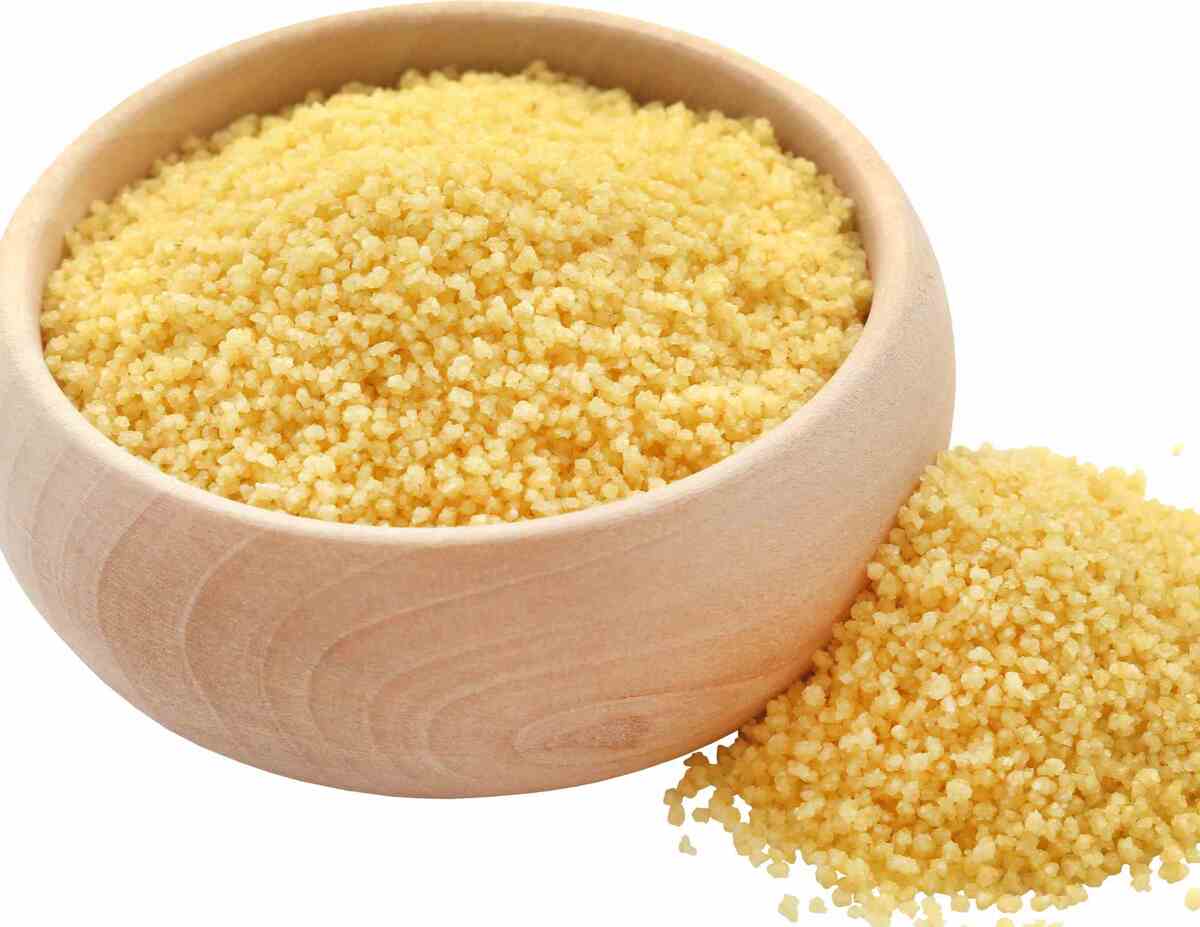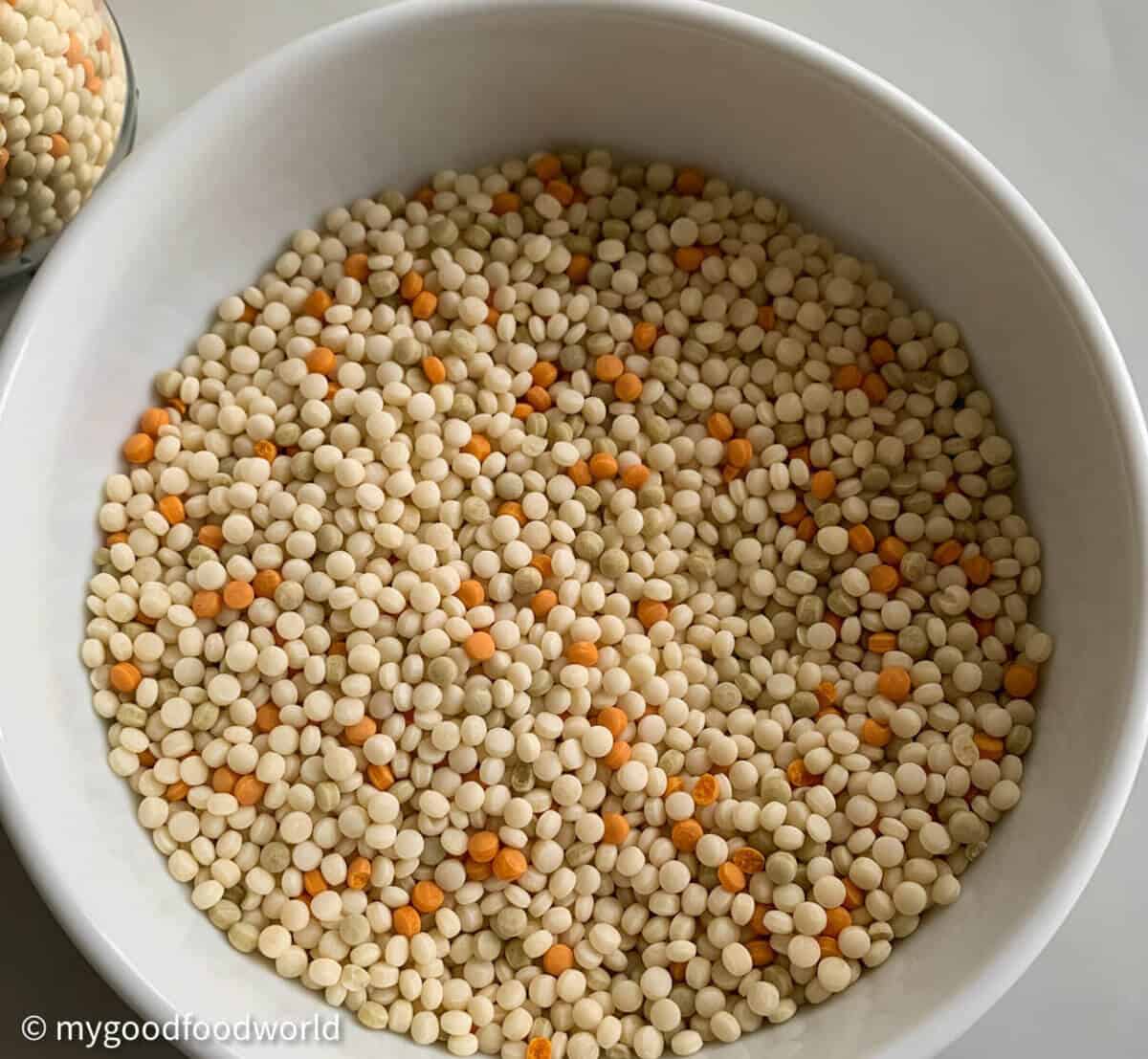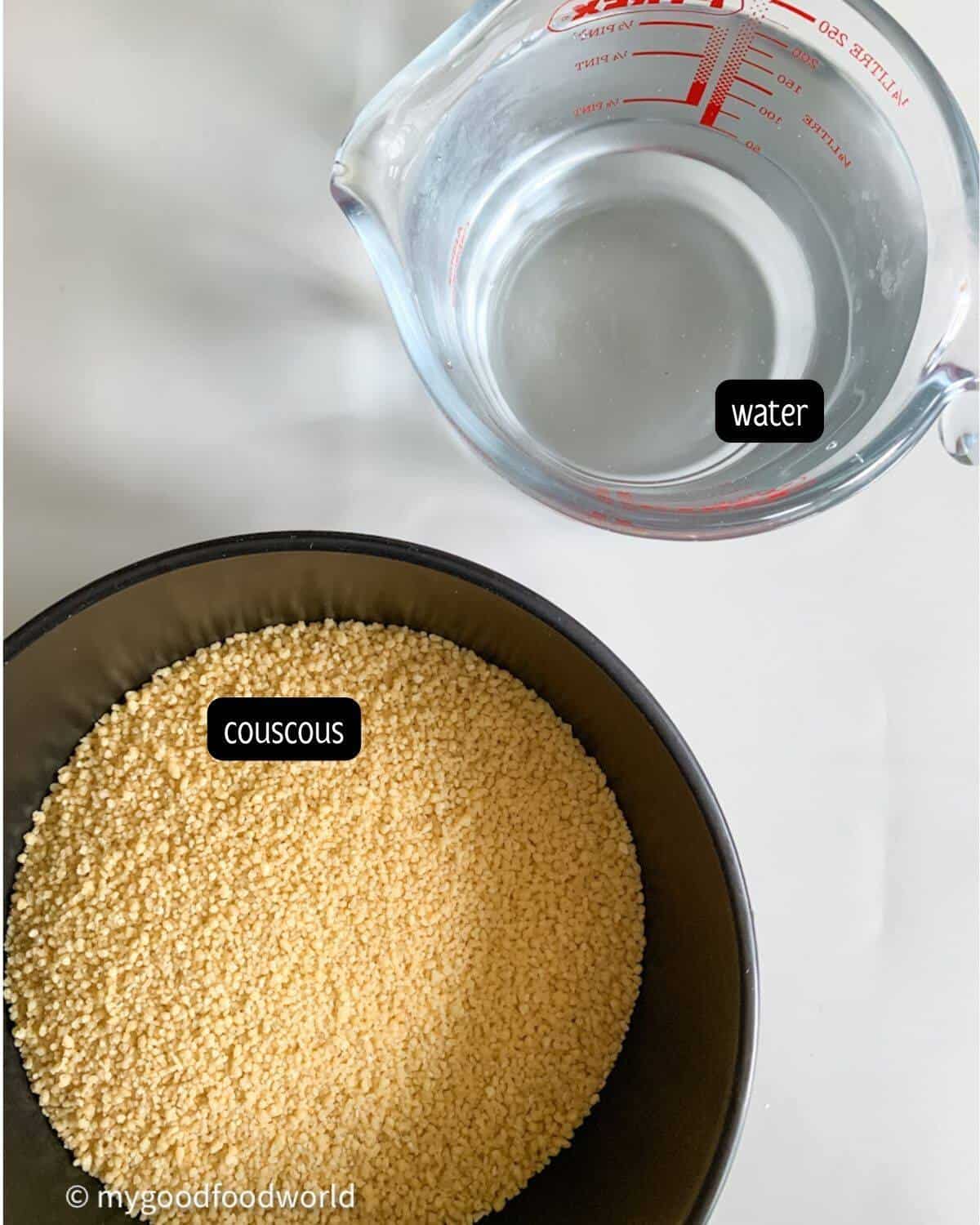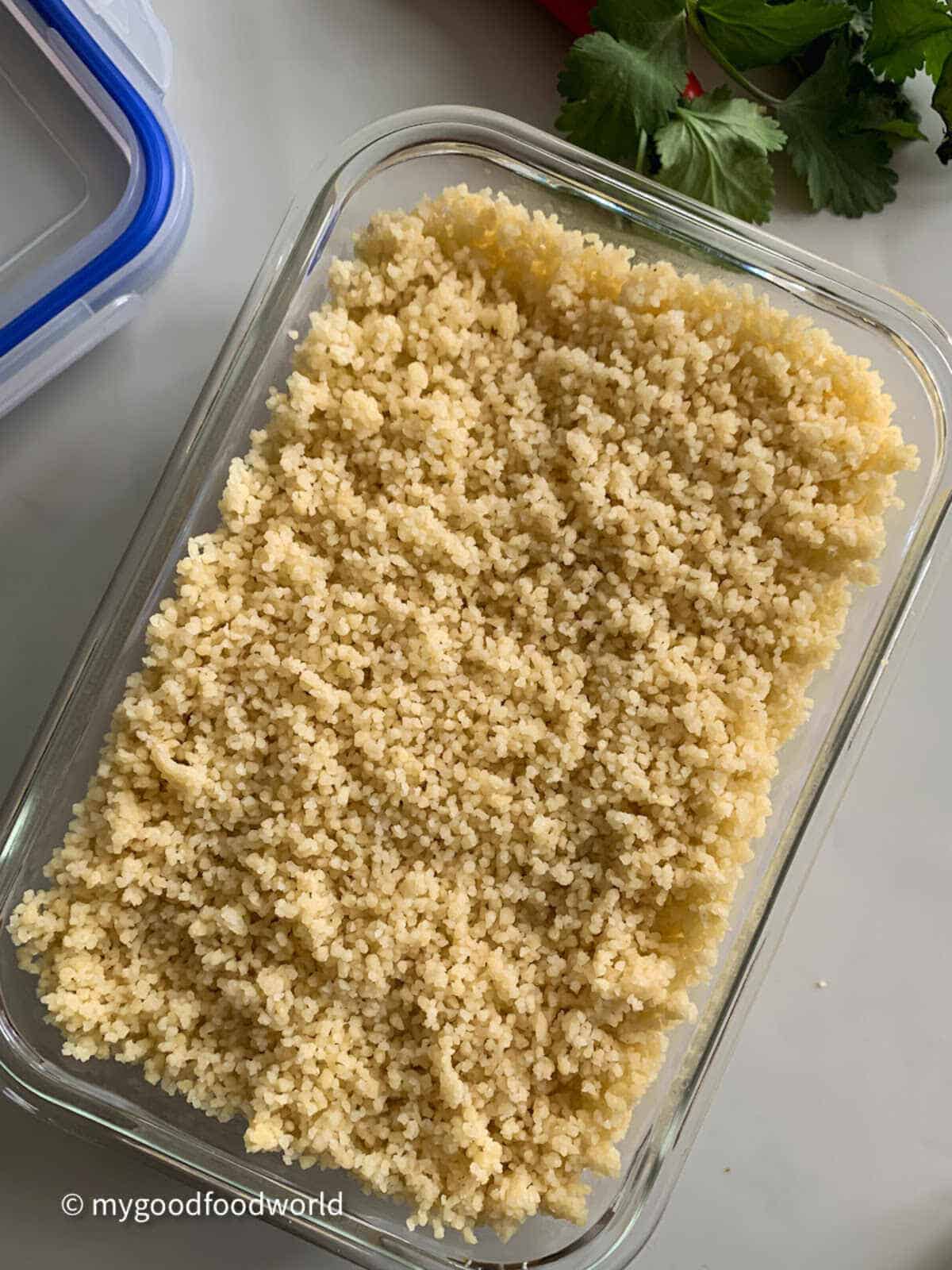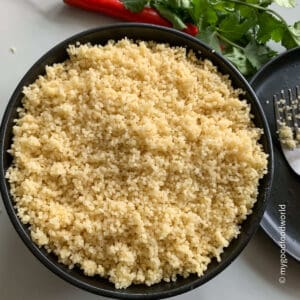Couscous is a fairly new ingredient in my cooking repertoire. Growing up in India, I wasn’t familiar with it and hadn’t tried it until I started living in the UK. It’s now a regular part of my pantry, and I enjoy cooking with it because it’s so versatile. What I love most about couscous is that, just like rice, it’s a blank canvas for flavors! Ever since I developed gluten intolerance, I have stuck to a gluten-free diet. This means that couscous is out of my meals - but I still make it for my girls. Well, since I’ve kind of answered the question, “Is couscous gluten free?” here, the rest of the article might seem a bit dull, right? — Not at all! Read on to learn more about couscous, its many types, the best substitutes, and a recipe for preparing it. Another question that’s been on my mind is: “Is buckwheat gluten free?” For easier navigation, I have organized this article into sections. Feel free to use the links below to jump to the section you want to read first. If you have enjoyed reading this, please take a moment to leave a comment and a rating below. This will motivate me to create more good content for you! You can also engage with me on Twitter, Facebook, and Instagram. - Padma The semolina is moistened and then rolled to form tiny spheres, giving couscous its signature texture. These small spheres are usually golden or light brown in color, depending on the type of wheat used. Interestingly, because semolina is also the main ingredient in pasta, couscous could be seen as a close cousin to pasta. There is a key difference though. Pasta is made from dough that’s kneaded and shaped; couscous is simply formed from moistened semolina without ever becoming dough. So, you might think of couscous as tiny, sphere-shaped pasta, but it’s made with a different process. This gives it a light, fluffy texture which is perfect for absorbing the flavors of any sauce, broth, or seasoning you pair it with. Gluten is a type of protein found in several grains, with wheat being the most common source. Gluten gives bread its elasticity and chewy texture. For people with gluten intolerance or celiac disease, gluten can cause a host of uncomfortable or even serious health issues. Besides wheat, grains like rye and barley also contain gluten. Some people might assume couscous is gluten-free because of its appearance. At first glance, it can resemble other grains like rice or quinoa. Adding to the confusion, certain gluten-free grains, like buckwheat and sorghum, can look similar to couscous in their uncooked form. However, looks can be deceiving! Despite these visual similarities, couscous contains gluten, making it off-limits for anyone who needs to have a gluten free diet.
Moroccan Couscous
Moroccan couscous is the most familiar type for many people. These tiny, irregularly shaped grains resemble polenta in texture, creating a light and fluffy base for a variety of dishes. Also known as golden couscous due to its yellow hue, this type is the most commonly available and widely used around the world. Its versatility makes it an ideal choice for everything from hearty stews to refreshing salads.
Instant Couscous
Instant couscous is what you’ll find most commonly in grocery stores. This pre-cooked and dried version of Moroccan couscous is perfect for those busy days when you need a quick meal. I love making this vegan couscous salad with instant couscous - delicious and super easy to prepare! Do check the section below, where I explain how to cook instant couscous in just 10 minutes.
Pearl Couscous
Pearl couscous is another delightful variety, known for its pretty, round, and uniform shapes that resemble pearls! Also known as Israeli couscous, Maftoul, or Ptitim, this pellet-like couscous takes a bit longer to cook than Moroccan couscous and has a pleasantly chewy texture. Generally light brown, pearl couscous can also be found in tri-color varieties, which add a vibrant touch to salads and dishes, making them visually appealing as well as tasty.
Lebanese Couscous
Finally, we have Lebanese couscous, also known as Moghrabieh. This is the largest of all couscous types, with its pea-sized, spherical shape that takes the longest to cook. No, Israeli couscous, also known as pearl couscous, is not gluten-free. Just like traditional couscous, it’s made from semolina, which comes from durum wheat, so it contains gluten. If you’re avoiding gluten for health reasons, it’s best to skip Israeli couscous and look for gluten-free alternatives instead. To cook Lebanese couscous, simply treat it like pasta—boil it in plenty of water until it reaches that perfect tenderness. However, the good news is that many gluten-free couscous products are available in supermarkets these days! Be sure though to check the ingredients list carefully to ensure you’re selecting the right gluten-free option that meets your dietary needs. Here are some great gluten-free alternatives to couscous: White or brown rice: While rice isn’t a perfect substitute for couscous since the grains are larger, it can still work well in many dishes. Short-grain rice is particularly helpful because it has a similar shape and texture. Millets: These small, round whole grains are completely free of gluten and incredibly versatile. The smaller varieties, like foxtail millet and barnyard millet, cook quickly and have a neutral flavor, making them a fantastic base for various dishes. Quinoa: This superfood has a similar texture, appearance, and feel to couscous, making it a near-perfect substitute. Just make sure to choose quinoa that is certified gluten-free to avoid any cross-contamination. Sabudana: Made from tapioca starch, sabudana comes in various sizes—from small bead-like grains, about the size of mustard seeds, to larger ones that look like pearls (hence the name tapioca pearls). They add a unique texture to dishes and can be a fun addition to your cooking. Buckwheat: Despite its name, buckwheat is not related to wheat and is naturally gluten-free. It has a slightly nutty flavor and can be cooked into a fluffy grain-like dish, similar to couscous. It is also a great ingredient for making buckwheat naan, offering a delicious gluten-free alternative to traditional naan. Amaranth: This is another gluten-free grain that cooks to a soft, porridge-like consistency. It has a slightly earthy flavor and is packed with protein and nutrients, making it a wholesome substitute in salads and grain bowls. Teff: These are tiny, gluten-free grains that are rich in protein and fiber. They have a mild, nutty flavor and can be cooked to a porridge-like texture or used in baked goods. It’s also the main ingredient in traditional Ethiopian injera bread. This is a basic recipe that requires just two ingredients: couscous and water. Check the recipe card for quantities. Step 1: Place the couscous in a bowl and add hot (freshly boiled) water. Step 2: Cover with a lid and set aside for 10 minutes. Step 3: After 10 minutes, remove the lid and gently fluff the grains up with a fork or spoon (also see the video below). The couscous is now ready to be used! You can make a warm or cold salad with it, a one-pot meal such as vegetable pulao or a tagine, or serve it as a side to your main meal. Check the section below for more suggestions. Yield: 1 cup (175 grams; 6¼ oz.) of dried couscous yields about 4 cups (405 grams; 14¼ oz.) of cooked couscous. Oil or butter: You can, if you want, add 1 teaspoon of butter or oil to the hot water. This will give the couscous a velvety, creamy texture, just like buttered rice. If you add butter, the recipe will no longer be dairy-free. Water or stock?: This depends on how you want to use the cooked couscous. If you plan to serve it alongside a meal, plain water will be sufficient. However, if you’re making a salad or vegetable pulao, soak the couscous in the stock of your choice for that extra flavor. Do bear in mind that the stock you choose will change the dietary labels of the couscous. Serving: There are many ways to serve couscous as part of meals. One of my favorite ways is with black chana curry, sauteed okra, and tomato raita—it makes for a hearty, Indian-flavored meal! Storage: Cooked couscous will keep in the fridge for 3-4 days. Cool it completely, then store it in a fridge-safe container with a tight-fitting lid.
📖 Recipe
Disclosure: The nutritional information is calculated using an online calculator and is based on available ingredients and preparation. It should not be considered a substitute for a professional nutritionists’ advice. Changing the quantities and cooking technique will alter the nutritional calculations.

